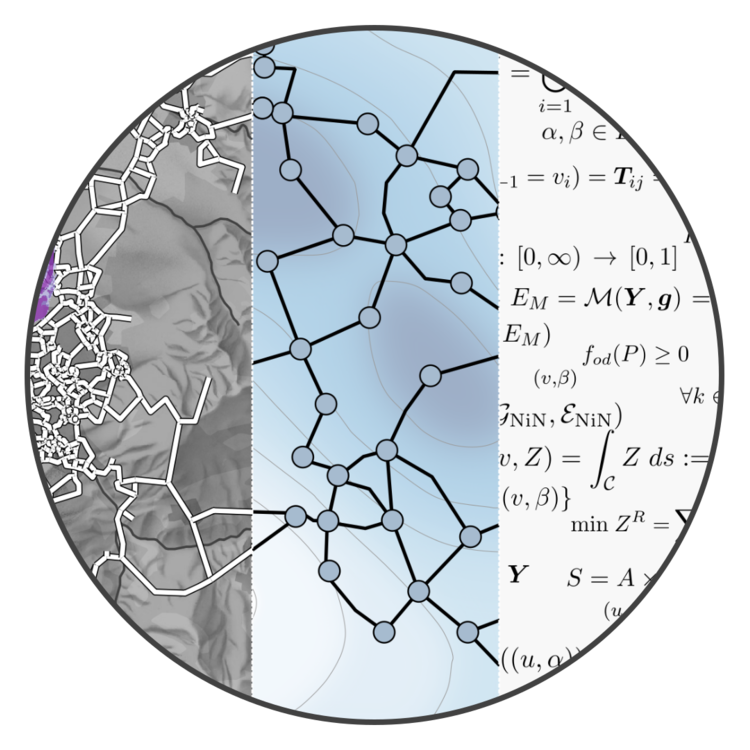
Network science provides powerful analytical, statistical, and computational methods to describe the behavior of complex systems. They help us to model and control power grids, transportation, and communication infrastructures, to study dynamical processes in computational physics and systems biology, to analyze social and economic networks, and to extract knowledge from large corpora of relational data. While the potential of analyzing graph or network representations of relational data is undisputed, we increasingly have access to data on networks that contain more than just dyadic relations. For example, data on user mobility, traffic flows on road networks, or supply chains.
Furthermore, advances in data analytics and machine learning have provided new ways to detect and reason about patterns in large data sets, to extract knowledge from vast corpora of unstructured information, and to support decision-making through predictive modeling and analytics. Despite these advances, the application of such Big Data Science techniques in practice is still a challenge. Apart from their large size, real-world data often exhibit complex characteristics - such as relational dependencies, time stamps, spatial and temporal correlations, noise and uncertainty, or a combination thereof - that hinder a straightforward application of standard algorithms.
Vision
Addressing these challenges, our aim is to pioneer a new generation of network models that can effectively capture the multi-dimensional and multi-relational characteristics inherent in complex systems while providing decision-making pipelines based on scalable data-driven algorithms to create new possibilities for monitoring, controlling, and optimizing their functionalities.
Our research on statistical ensembles of networks enabled us to derive multi-layer spatially embedded random networks, a broad class of analytically tractable random networks with preserved spatial characteristics and interactions that facilitate model selection, hypothesis testing, and inference tasks. We could further show that higher-order probabilistic network models such as multi-layer hypergraphs and causal paths capture the relationship between network dynamics and the underlying network topology better than typical (first-order) network abstractions. Building on this, recent work introduces a Clustering-Weighted Multivariate Multiscale Sample Entropy method to quantify the complexity of large-scale time series data on networked systems. Another aspect of our work covers scalable data analytics and machine learning techniques for spatial-temporal networks to create approaches that can learn from and update based on multiple data sources, as well as represent and predict the current and future state of complex systems. This integrates machine learning to formulate optimization problems that ensure solutions meet operational constraints with high probability, balancing performance and robustness while maintaining real-time traceability. Furthermore, we are core contributors to the open-source software pathpyG, a machine learning library that facilitates next-generation network analytics and graph learning for time series data on graphs.
Projects
The project aims to develop a computational method that will enable mining, translation, and analysis of relationships among global source materials in one or more underrepresented languages. Specifically, based on the inputs of a preliminary controlled vocabulary in music theory (to be developed via the Magic Grant) and a database spanning…
Half a billion people in Sub-Saharan Africa (SSA) lack access to electricity. Infrastructure investments of USD 22 billion annually are required to provide universal access to affordable electricity. Hence, information about the existing, planned, and necessary electricity infrastructure is crucial to ensure sustainable investments and support…
The aim of this project is to collaborate with industry partners to develop comprehensive, system-level approaches for evaluating the resilience of large-scale infrastructure systems to climate change hazards. This is an urgent need as current industrial practices primarily utilize asset-level performance indicators to make crucial systemwide…
Networks, or graphs, are a valuable tool for comprehending complex systems - they can represent a wide range of real-world phenomena such as social networks, biological networks, financial systems, transportation and communication networks, and more. Graphs enable modeling various aspects of these systems and help us understand the intricate…






